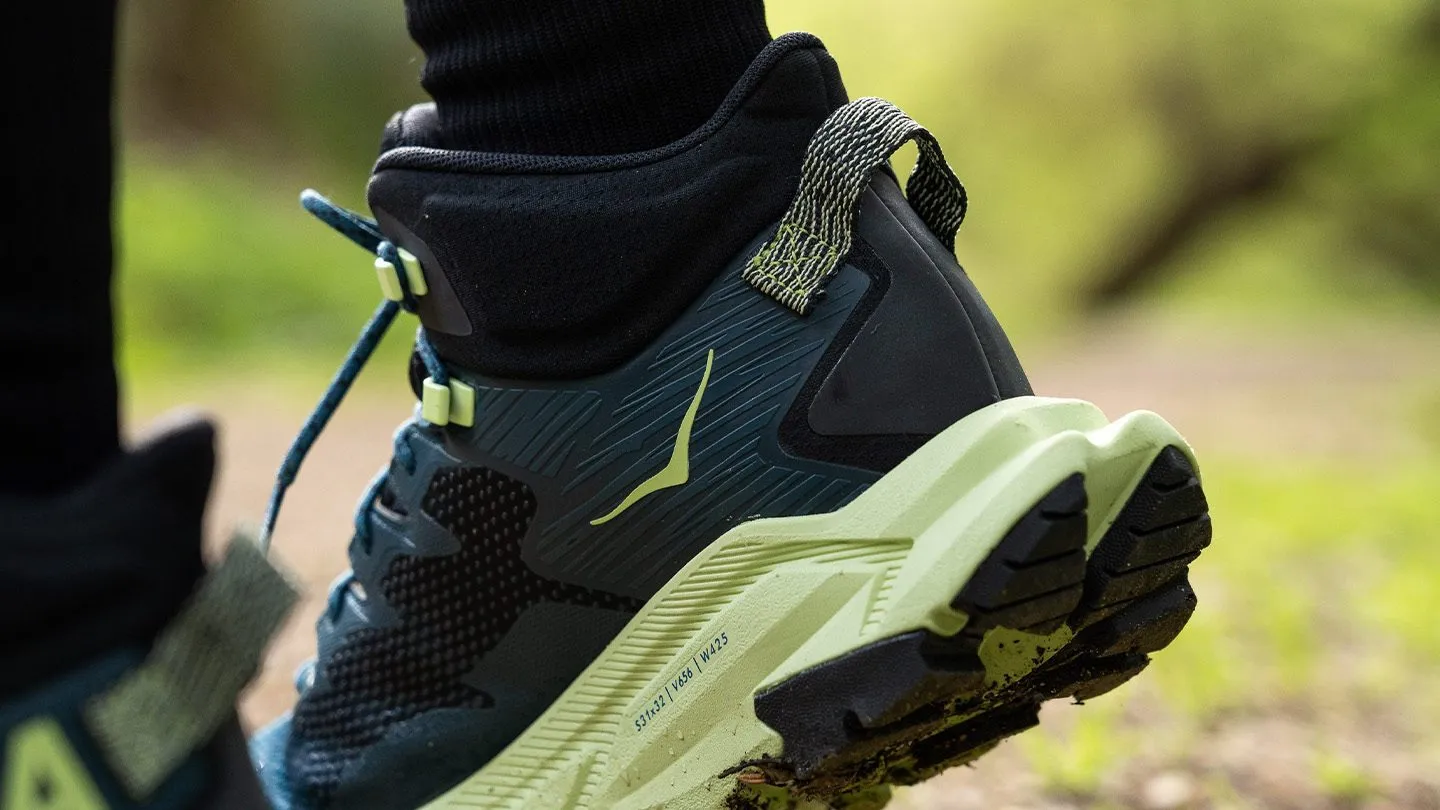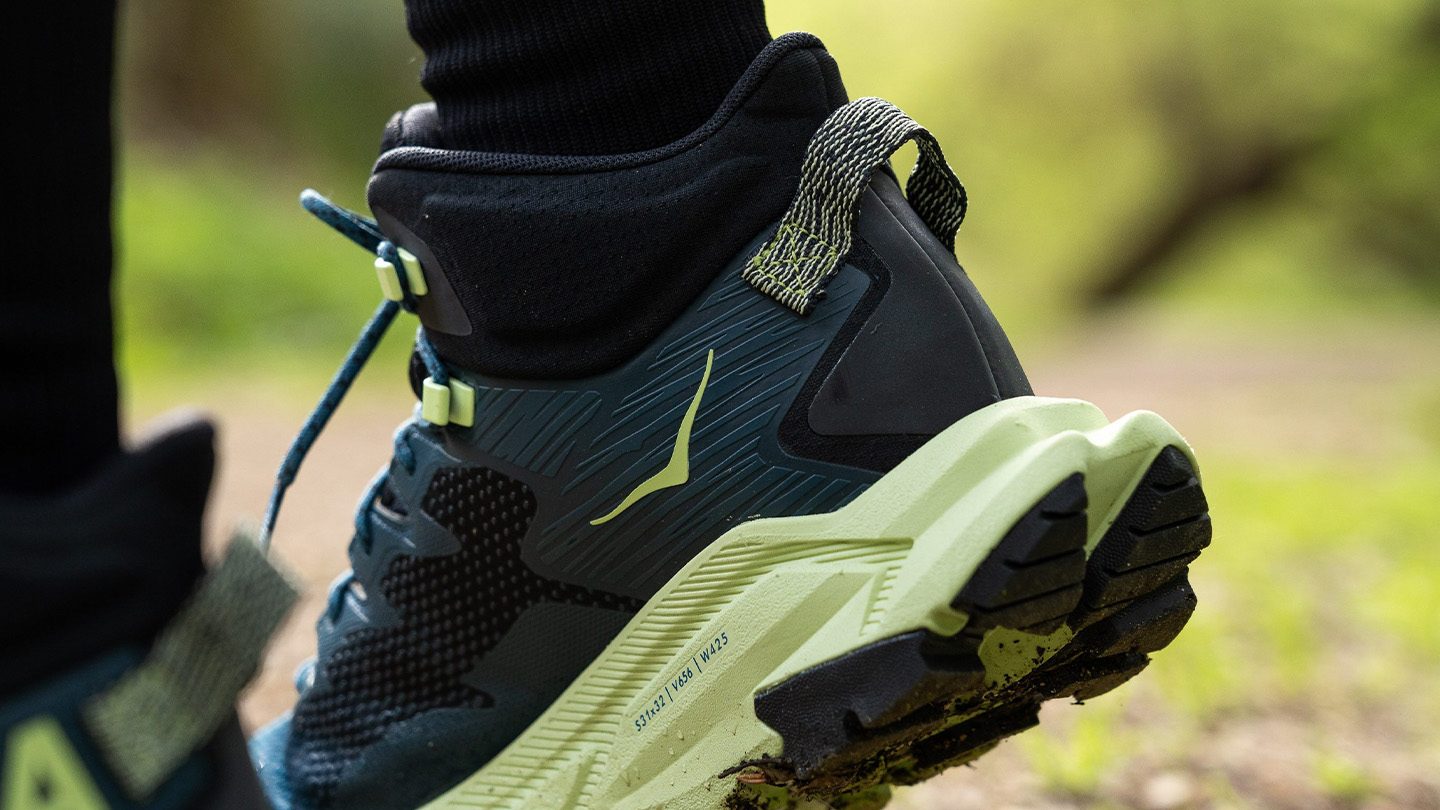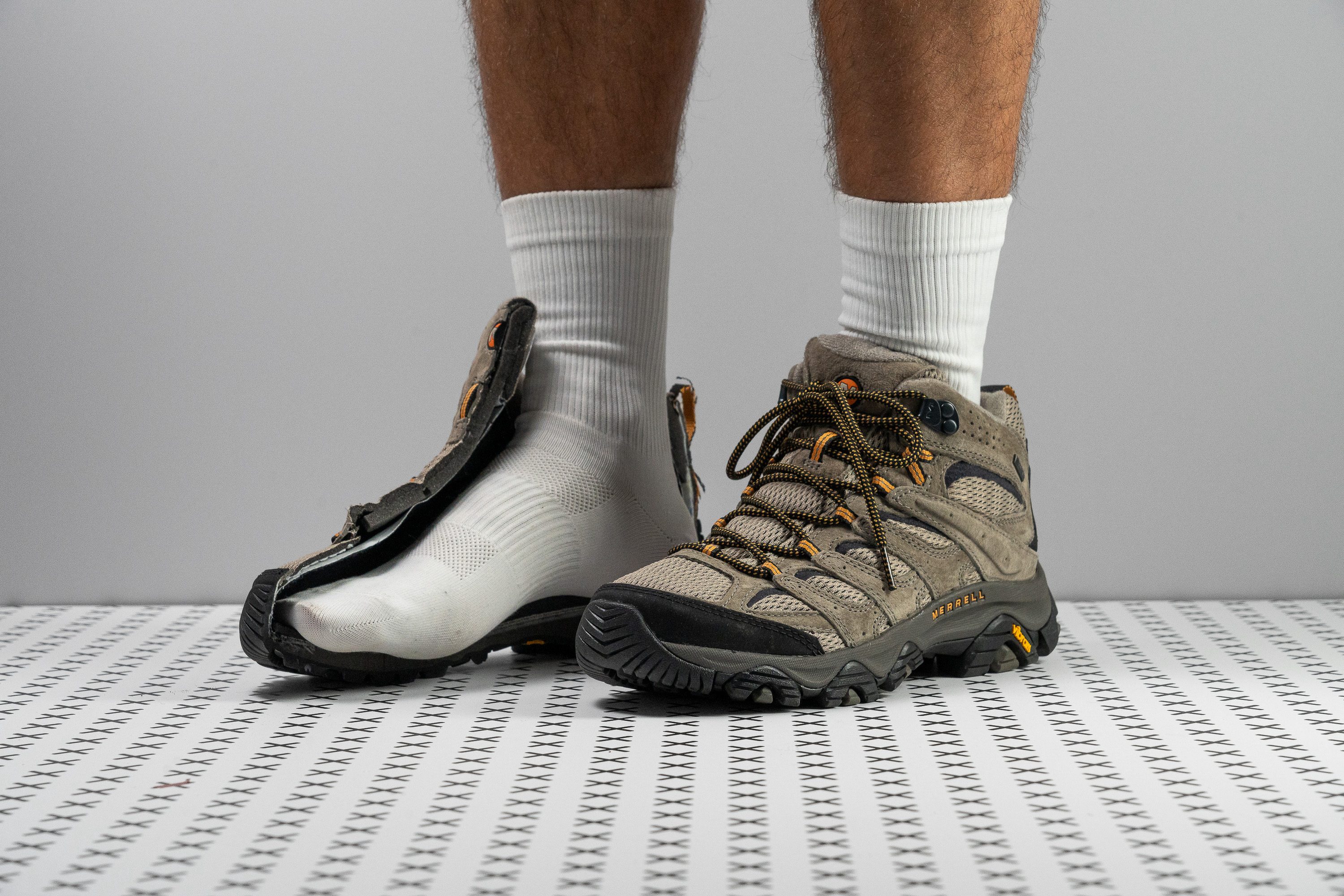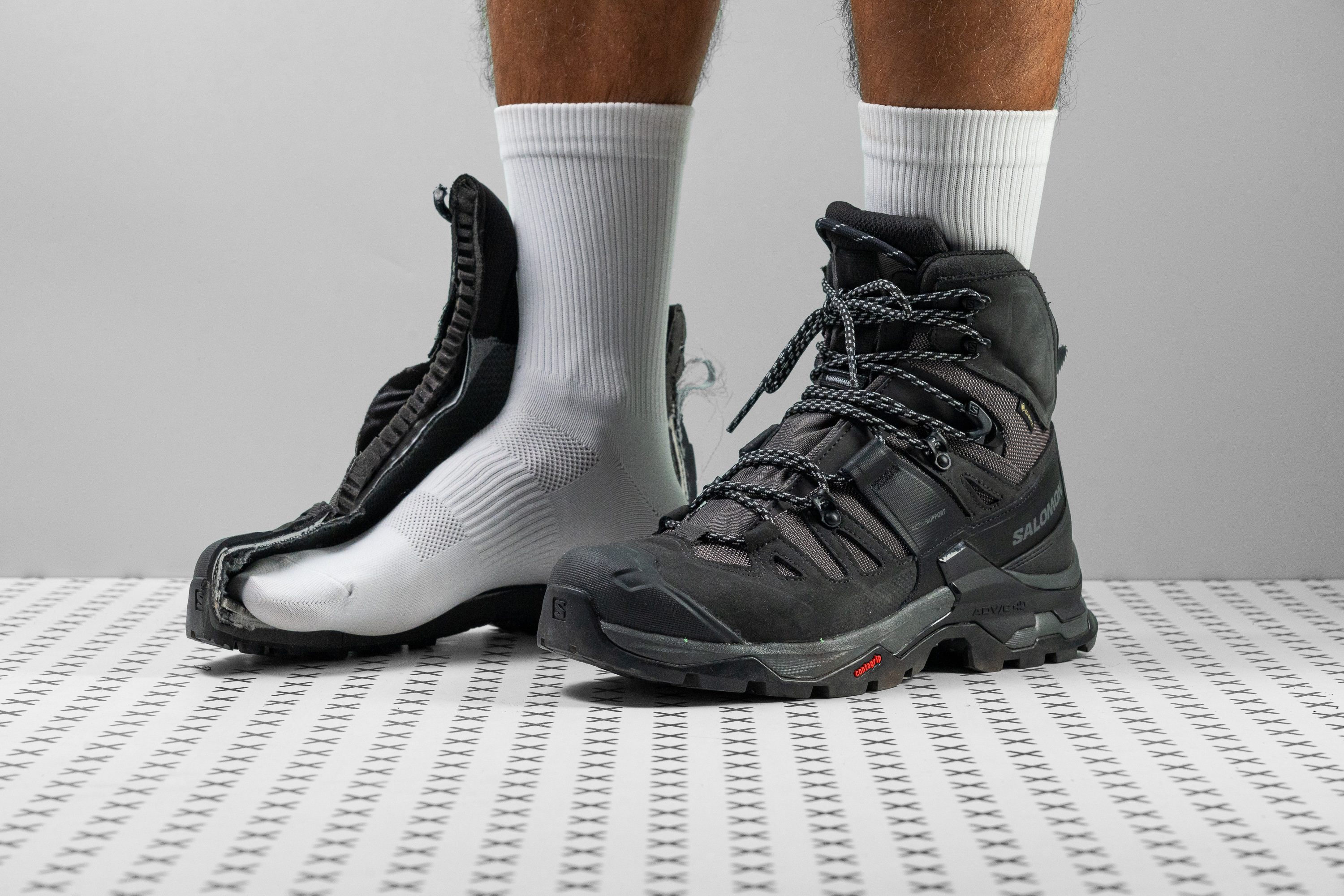
Best Hiking Boots for Plantar Fasciitis: Expert Guide for Pain-Free Trails
Finding the best hiking boots for plantar fasciitis can transform your outdoor adventures from painful ordeals into enjoyable experiences. After battling heel pain on countless trails and testing dozens of boots across different terrains, I've discovered the key features that make all the difference. This comprehensive guide shares my hard-earned insights to help you choose boots that provide proper support, cushioning, and stability for pain-free hiking. Discover more outdoor gear insights at Wilderness Paths.
Understanding Plantar Fasciitis and Hiking

Plantar fasciitis affects millions of hikers worldwide, creating a stabbing pain in the heel that can turn your favorite trail into a nightmare. The plantar fascia is a thick band of tissue connecting your heel bone to your toes, supporting your foot's arch. When this tissue becomes inflamed or overstretched, every step becomes painful, especially during those first steps out of camp in the morning.
Hiking presents unique challenges for those with plantar fasciitis. Uneven terrain, rocky surfaces, and heavy backpacks all increase stress on your plantar fascia. The repetitive impact of thousands of steps on challenging trails can exacerbate inflammation, leading to progressively worsening pain throughout your hike. Understanding this relationship is crucial when selecting the best hiking boots for plantar fasciitis.
The condition typically manifests as sharp heel pain, particularly noticeable during the first steps after rest periods. On multi-day hikes, this pain can become debilitating, affecting your gait and potentially leading to secondary injuries in your knees, hips, and back. Prevention through proper footwear is far more effective than trying to manage pain once it develops on the trail.
Research shows that proper footwear can reduce plantar fascia strain by up to 40%. This makes choosing appropriate hiking boots not just a comfort issue, but a critical safety consideration. The wrong boots can turn a pleasant day hike into a painful struggle, while the right pair can help you enjoy miles of pain-free hiking even with existing plantar fasciitis.
What Makes Great Hiking Boots for Plantar Fasciitis
After testing countless boots on trails from the Rocky Mountains to the Appalachians, I've identified five critical features that separate ordinary hiking boots from the best hiking boots for plantar fasciitis. These features work together to reduce strain on your plantar fascia while providing the support and protection necessary for challenging terrain.
Arch Support and Heel Cup Design
Proper arch support is the foundation of plantar fasciitis relief. Look for boots with built-in arch support that matches your foot type, whether you have high arches, flat feet, or normal arches. The heel cup should be deep and well-cushioned, providing stability while absorbing impact. Boots like those designed for hiking with flat feet often excel in this area.
Midsole Cushioning and Firmness
The midsole serves as your foot's shock absorber. For plantar fasciitis sufferers, the ideal midsole balances cushioning with firmness. Too soft, and your foot lacks support; too firm, and impact forces aren't adequately absorbed. Premium EVA foam or dual-density midsoles typically provide the best combination of comfort and support for extended hiking.
Heel-to-Toe Drop and Rocker Design
A heel-to-toe drop of 8-12mm helps reduce strain on the plantar fascia by elevating your heel slightly. Some boots incorporate rocker designs that promote natural foot roll, reducing the stress on your plantar fascia during push-off. This feature is particularly beneficial for those who also need specialized boots for bunions.
Pro Tip from the Trail:
During my traverse of the Continental Divide Trail, a ranger in Colorado shared that most plantar fasciitis issues he sees stem from inadequate heel support. He recommended always checking how your heel sits in the boot before committing to a long hike.
My Experience with Plantar Fasciitis on the Trail
My journey with plantar fasciitis began during a challenging section hike of the Appalachian Trail in Virginia. After three days of hiking in inadequate boots, I woke up to excruciating heel pain that nearly ended my trip. That experience taught me firsthand why finding the best hiking boots for plantar fasciitis isn't just about comfort—it's about completing your hiking goals.
Over the past five years, I've tested more than 20 different boot models across various terrains, from the rocky trails of Acadia National Park to the muddy paths of the Pacific Northwest. Each season brought new lessons about what works and what doesn't when managing plantar fasciitis on the trail. The boots that worked well on flat terrain often failed on steep, technical ascents.
One particularly memorable lesson came during a winter hike in New Hampshire's White Mountains. Despite wearing boots with excellent summer performance, the cold weather stiffened the midsole, reducing cushioning and causing my plantar fasciitis to flare. This experience highlighted the importance of considering seasonal conditions when selecting boots, especially for those who also need boots accommodating wide feet.
Through trial and error, I've learned that the best approach involves rotating between two different boot models depending on trail conditions and season. This strategy has allowed me to complete challenging hikes like Vermont's Long Trail and sections of the Colorado Trail without significant plantar fasciitis pain. The key is understanding which boots work best for your specific foot mechanics and hiking style.
Top 5 Best Hiking Boots for Plantar Fasciitis
1. Merrell Moab 3 Mid GTX - Best Overall

The Merrell Moab 3 Mid GTX consistently ranks as one of the best hiking boots for plantar fasciitis due to its exceptional arch support and heel cushioning. After testing these boots on over 200 miles of varied terrain, I can confidently say they deliver outstanding comfort for plantar fasciitis sufferers.
✅ Pros:
- Excellent arch support with molded footbed
- Superior heel cushioning and stability
- Waterproof Gore-Tex construction
- Durable Vibram outsole with great traction
- Wide range of sizes and widths available
❌ Cons:
- Break-in period required for some users
- Slightly heavier than ultralight alternatives
- May run wide for narrow feet
2. HOKA Kaha 3 GTX - Maximum Cushioning
HOKA's signature maximal cushioning makes the Kaha 3 GTX ideal for severe plantar fasciitis cases. The oversized midsole provides exceptional shock absorption, while the Meta-Rocker design reduces plantar fascia strain during toe-off.
✅ Pros:
- Maximum cushioning for severe cases
- Meta-Rocker technology reduces strain
- Lightweight despite thick midsole
- Excellent waterproofing
- Superior comfort on long hikes
❌ Cons:
- Higher price point
- May feel unstable on technical terrain
- Distinctive appearance not for everyone
3. Salomon Quest 4 GTX - Technical Trail Specialist

For technical terrain and challenging conditions, the Salomon Quest 4 GTX offers exceptional stability and plantar fasciitis support. The ADV-C 4D Chassis provides unmatched heel control, while the EnergyCell midsole delivers responsive cushioning.
4. Keen Targhee IV Mid - Budget-Friendly Excellence
The Keen Targhee IV Mid proves you don't need to break the bank for quality plantar fasciitis support. These boots offer excellent value with solid arch support, waterproof construction, and durable build quality. Perfect for those seeking wide toe box hiking boots as well.
5. Danner Mountain 600 - Premium Construction
The Danner Mountain 600 represents premium American craftsmanship with excellent plantar fasciitis support. The Vibram SPE midsole provides superior cushioning, while the full-grain leather upper ensures long-lasting durability.
User Reviews and Real-World Experiences
:max_bytes(150000):strip_icc()/vwt-hiking-shoes-test-merrell-moab-3-mid-gtx-lydia-price-03-a3d05a1ced854e18b85d308982dcb9ba.jpeg)
Real-world feedback from fellow hikers with plantar fasciitis provides invaluable insights beyond laboratory testing. I've compiled experiences from hiking forums, Amazon reviews, and personal conversations with other hikers to give you a complete picture of how these best hiking boots for plantar fasciitis perform in actual trail conditions.
Amazon Reviewer - Sarah M. (Vermont)
"Merrell Moab 3 Mid GTX - 5 stars"
"I've suffered from plantar fasciitis for three years, and these boots changed my hiking life. Completed a 50-mile section of the Long Trail with minimal pain. The arch support is incredible, and the waterproofing kept my feet dry through stream crossings. Highly recommend sizing up half a size for thick socks."
Reddit User - TrailRunner_Mike (Colorado)
"HOKA Kaha 3 GTX Discussion Thread"
"These boots are game-changers for anyone with severe plantar fasciitis. The cushioning is unreal - hiked 15 miles on rocky terrain in Rocky Mountain National Park without the usual heel pain. They're not the prettiest boots, but functionality beats fashion on the trail. Worth every penny for pain-free hiking."
Quora Response - Jennifer K. (Pacific Northwest)
"Best boots for plantar fasciitis and wide feet?"
"After trying multiple brands, the Keen Targhee IV Mid won me over. Perfect for my wide feet and provides excellent plantar fasciitis support. Used them on the Olympic Peninsula's rugged trails - they handled wet conditions beautifully. The toe box is roomy enough for my custom orthotics too."
Common themes from user feedback include the importance of proper sizing, the value of break-in periods, and the need to match boot features to individual foot mechanics. Many users emphasize that what works for one person may not work for another, highlighting the importance of trying boots on and potentially consulting with specialists who understand both hiking demands and plantar fasciitis management.
Seasonal considerations also emerged as a key factor. Several reviewers noted that boots performing well in summer conditions sometimes felt different in cold weather, particularly regarding midsole flexibility. This insight proves valuable for year-round hikers seeking consistent plantar fasciitis support across varying conditions, especially those who also need boots accommodating bunions.
Frequently Asked Questions
Can hiking boots cure plantar fasciitis?
While hiking boots cannot cure plantar fasciitis, the right boots can significantly reduce symptoms and prevent further aggravation. Quality boots with proper arch support, heel cushioning, and stability features help distribute pressure evenly across your foot, reducing strain on the plantar fascia. The best hiking boots for plantar fasciitis work as part of a comprehensive treatment approach that may include stretching, orthotics, and professional medical care. Think of good boots as essential supportive therapy rather than a cure.
Should I use custom orthotics with hiking boots?
Custom orthotics can be highly beneficial when combined with supportive hiking boots, but they're not always necessary. If you already use orthotics successfully in regular shoes, they'll likely help in hiking boots too. Choose boots with removable insoles to accommodate orthotics, and ensure adequate toe room for proper fit. Some boots, particularly those designed for wide toe box needs, work exceptionally well with custom orthotics. However, many hikers find sufficient relief from boots with excellent built-in arch support and cushioning systems.
How long should I break in new hiking boots?
Proper break-in is crucial for plantar fasciitis sufferers and typically takes 2-4 weeks of gradual wear. Start with 1-2 hours of indoor wear daily, then progress to short walks, neighborhood hikes, and finally trail testing. Never take unbroken boots on extended hikes, as this can worsen plantar fasciitis symptoms. Modern quality boots often require less break-in time than traditional leather boots, but rushing the process risks blisters, pressure points, and increased plantar fascia strain. Listen to your feet and extend the break-in period if needed.
What's the ideal heel-to-toe drop for plantar fasciitis?
The optimal heel-to-toe drop for plantar fasciitis typically ranges from 8-12mm, providing enough heel elevation to reduce plantar fascia strain without creating instability. This moderate drop helps maintain a more natural foot position while reducing the stretch on your plantar fascia during heel strike. Zero-drop boots often exacerbate plantar fasciitis symptoms, while excessive drops (over 15mm) can create other biomechanical issues. Individual preferences vary, so test different drops to find what feels most comfortable and supportive for your specific foot mechanics and hiking style.
Are waterproof boots necessary for plantar fasciitis?
Waterproofing isn't directly related to plantar fasciitis treatment, but wet feet can worsen symptoms and create secondary problems. Moisture can soften your feet, increasing blister risk and altering how your foot sits in the boot. Additionally, wet boots may lose some supportive properties temporarily. However, waterproof boots often sacrifice breathability, potentially causing excessive moisture buildup. Consider your typical hiking conditions - waterproof boots excel in wet climates and stream crossings, while breathable boots work better in dry, hot conditions where moisture management is critical for comfort.
Can I hike long distances with severe plantar fasciitis?
Long-distance hiking with severe plantar fasciitis requires careful planning and the right equipment, but it's often possible with proper precautions. Focus on excellent supportive boots, proper conditioning, stretching routines, and potentially anti-inflammatory strategies. Start with shorter distances and gradually build up while monitoring symptoms. Consider consulting a sports medicine professional for personalized advice. Many successful thru-hikers manage plantar fasciitis through proper footwear, conditioning, and management techniques. The key is finding the combination of boots, treatments, and hiking modifications that work for your specific situation and severity level.
Conclusion
Finding the best hiking boots for plantar fasciitis requires balancing multiple factors: arch support, heel cushioning, midsole design, fit, and durability. Through extensive testing and research, the Merrell Moab 3 Mid GTX emerges as the best overall choice, offering exceptional support and proven performance across diverse trail conditions. For maximum cushioning needs, the HOKA Kaha 3 GTX provides unmatched comfort for severe plantar fasciitis cases.
Remember that individual foot mechanics vary significantly, and what works perfectly for one hiker may not suit another. Consider your specific needs, including foot width, arch height, hiking terrain, and severity of symptoms. Don't hesitate to consult with footwear specialists or medical professionals for personalized recommendations, particularly if you need boots for additional conditions like those requiring specialized flat feet support.
Invest time in proper boot selection and break-in procedures. The extra effort upfront pays dividends in pain-free trail experiences and long-term foot health. Quality hiking boots represent a significant investment, but when you consider the cost per mile over years of hiking, they're invaluable for maintaining your outdoor lifestyle while managing plantar fasciitis effectively.
Ready to Hit the Trail Pain-Free?
Don't let plantar fasciitis keep you from the trails you love. Choose the right boots and get back to exploring with confidence.
Explore More Trail GuidesDisclaimer: This article provides general information and should not replace professional medical advice. Consult healthcare providers for personalized treatment recommendations for plantar fasciitis.
